How to Safely Change a Flat Tire: A Step-by-Step Guide for Drivers
Changing a flat tire can be a daunting task, especially if you have never done it before. However, it is an essential skill that every driver should know. In this article, I will share with you the steps to safely change a flat tire, so you can be prepared in case of an emergency.
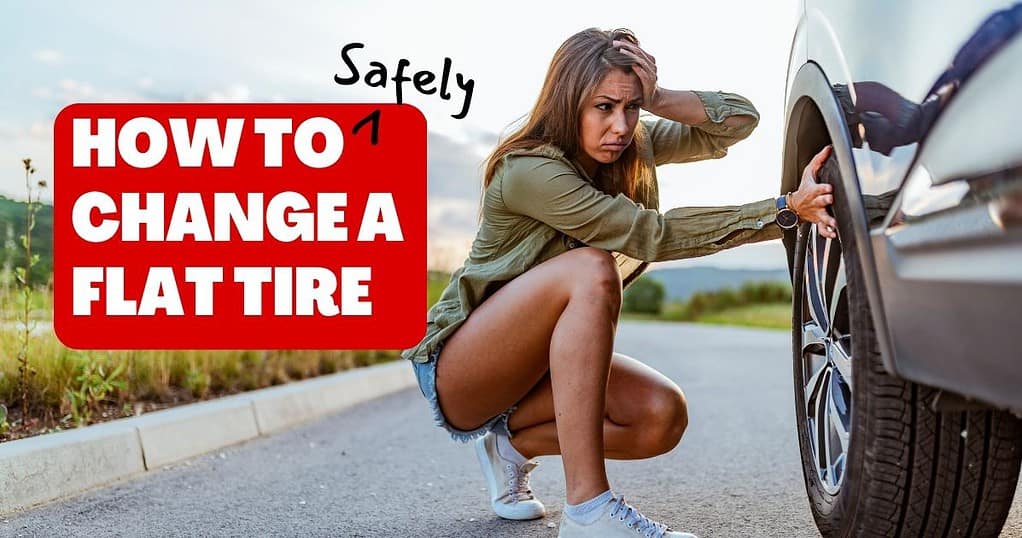
First and foremost, finding a safe location to change your tire is important. If you are on a busy road, move your car to the side of the road as far as possible and turn on your hazard lights. Make sure your car is on a flat surface and engage your parking brake. Also, ensure that your car is in gear (if it is a manual transmission) or in park (if it is an automatic transmission).
Once you have found a safe location, it is time to gather the necessary tools to change your tire. You will need a spare tire, a lug wrench, and a jack. These tools are usually located in the trunk of your car. If you are unsure where they are, consult your car’s owner manual. With these tools in hand, you are ready to change your tire.
Why Safety Is The #1 Priority When Changing A Flat Tire
I remember back when I was in high school, a young couple named Sarah and Mark were excitedly driving to their first hiking trip together. As they chatted about the trails they’d explore, they suddenly felt the car jolt and heard the unmistakable sound of a flat tire. They pulled over on the busy highway, without much thought to finding a safer spot. Mark, eager to impress Sarah with his skills, decided to change the tire right there.
As Mark began working on the tire, cars whizzed by at breakneck speeds, only inches away from him. Sarah, increasingly anxious, urged Mark to consider moving the car to a safer location. But Mark insisted it would only take a minute, and they would be back on their way.
Tragically, a distracted driver veered too close to the shoulder, hitting Mark and causing severe injuries. The joy of their day turned into a nightmare in an instant, all because they didn’t prioritize finding a safe place to change their tire.
Don’t let this be your story. Always remember to find a secure and safe location away from traffic when changing a flat tire. It may take a little extra time, but it could save your life.
In this article, I will walk you through step-by-step on how to safely change your flat tire so you don’t end up like Mark with severe injuries or even worse.
Preparing to Change a Flat Tire
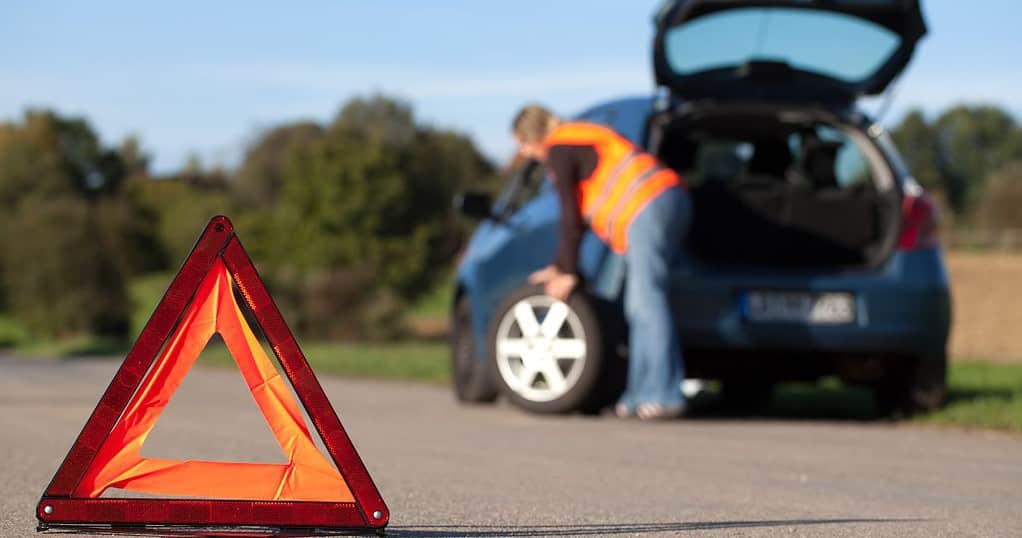
Gathering the Necessary Tools
Before changing a flat tire, it is important to gather all the necessary tools. These tools include a lug wrench, a jack, a spare tire, a hubcap, and a locking lug nut (if applicable).
The lug wrench is used to loosen and tighten the lug nuts that hold the tire in place. The jack is used to lift the car off the ground so that the tire can be removed. The spare tire is the replacement tire that will be used to replace the flat tire. The hubcap covers the hub of the wheel and can be removed to access the lug nuts. The locking lug nut is a special type of lug nut that requires a key to remove it.
It is important to make sure that all the tools are in good condition and functioning properly before attempting to change a tire. A damaged tool can make the process more difficult and can even cause injury.
I always keep these tools in the trunk of my car so that they are easily accessible in case of a flat tire. It is also a good idea to familiarize yourself with the location of these tools and how to use them before you actually need to change a tire. This can save time and reduce stress in an emergency situation.
In summary, before changing a flat tire, gather all the necessary tools including a lug wrench, a jack, a spare tire, a hubcap, and a locking lug nut (if applicable). Make sure that the tools are in good condition and familiarize yourself with their location and use.
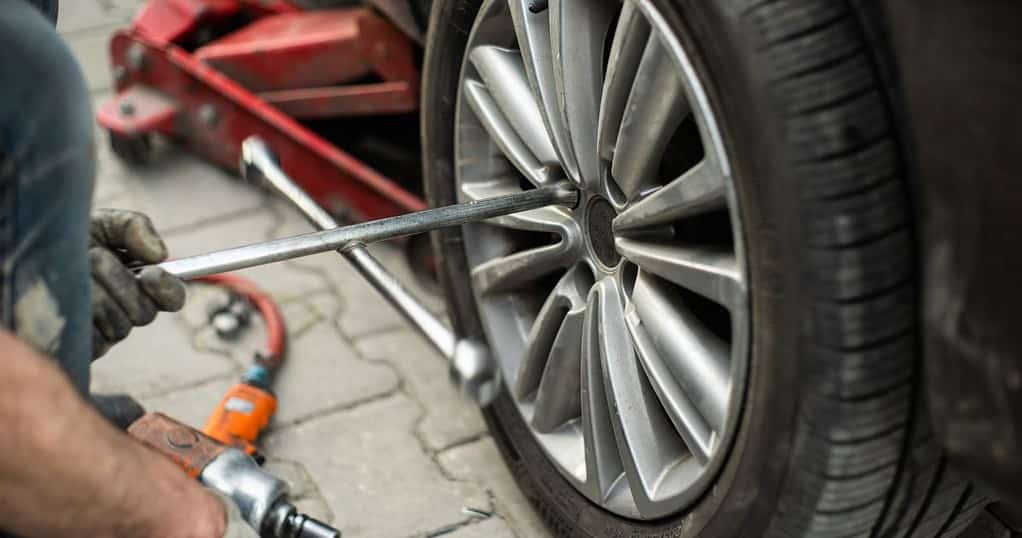
Locating a Safe Area
Finding a Safe Location
When you realize that you have a flat tire, the first step is to find a safe location to change it. Ideally, you should pull off the road onto a flat surface, away from traffic. Look for a wide shoulder, a parking lot, or an empty side street. If you can’t find a safe location, don’t risk changing the tire on the side of the road. Instead, call for roadside assistance.
It’s important to be visible to other drivers while you’re changing the tire. Turn on your hazard lights and set up reflective triangles or flares if you have them. This will alert other drivers to your presence and help prevent accidents.
Parking Brake
Before you begin changing the tire, make sure to engage the parking brake. This will prevent your car from rolling while you’re working on it.
Hazards
If you’re on a busy road, it’s important to be aware of hazards. Look out for passing cars, and be careful not to step into traffic while you’re working. Watch out for broken glass, sharp objects, or other debris that could cause injury or damage to your car.
Conclusion
By following these simple steps, you can safely change a flat tire and get back on the road. Remember to always find a safe location, use your hazards and reflective triangles, engage the parking brake, and be aware of hazards. If you’re not comfortable changing the tire yourself, don’t hesitate to call for roadside assistance.
Changing the Flat Tire

Lifting the Vehicle with a Jack
First, I make sure the car is in a safe location and put on the emergency brake. Then, I locate the jack and the spare tire, which are usually located in the trunk of the car. I remove the hubcap if there is one and place the jack under the car in the appropriate location, which can be found in the car’s manual or on the car itself.
Using the tire iron, I turn the jack handle clockwise until the car is lifted off the ground. I make sure the car is stable and secure before continuing.
Removing the Flat Tire and Installing the Spare Tire
Next, I use the tire iron to loosen the lug nuts on the flat tire. I turn them counterclockwise, being careful not to remove them completely yet. I then use the jack to lift the car high enough to remove the flat tire and replace it with the spare tire.
I align the holes in the spare tire with the studs on the car and push the tire onto the studs. I then hand-tighten the lug nuts as much as I can.
Using the tire iron, I tighten the lug nuts in a star pattern, which means tightening the lug nut opposite to the one I just tightened. I continue to tighten the lug nuts in a star pattern until they are all tight.
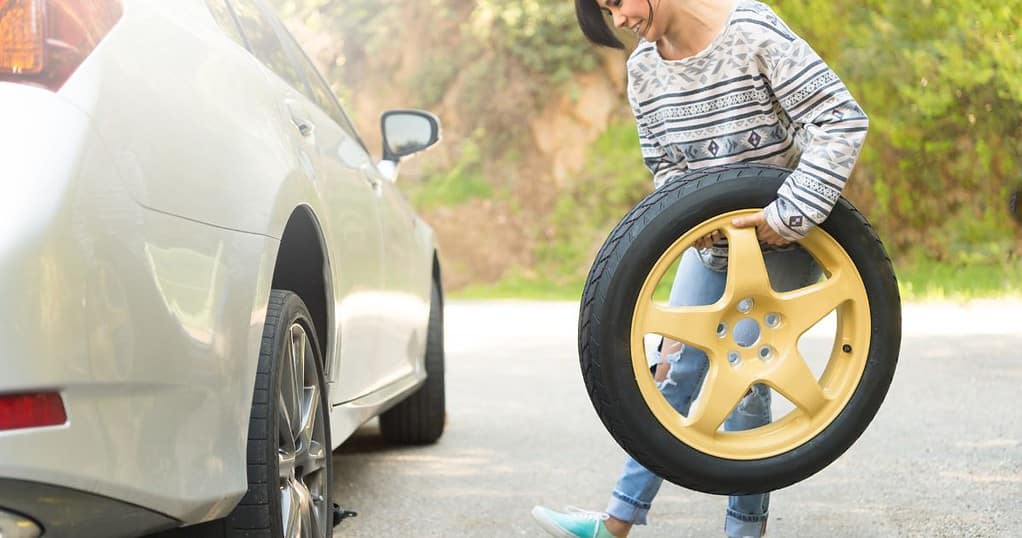
Tightening the Lug Nuts
Finally, I use the tire iron to fully tighten the lug nuts, making sure they are all snug and secure. I then lower the car back to the ground using the jack and remove the jack from under the car.
I double-check that all the lug nuts are tight and secure before driving the car. It’s important to remember that the spare tire is only meant to be a temporary solution and should be replaced with a new tire as soon as possible.
Changing a flat tire can be a daunting task, but with the right tools and knowledge, it can be done safely and quickly.
After Changing the Flat Tire
Checking the Tire Pressure
Once you have changed the flat tire, it’s important to check the tire pressure of all four tires, including the spare tire. Proper tire pressure is crucial for safe driving and can affect your car’s handling, fuel efficiency, and overall performance. To check the tire pressure, you will need a tire pressure gauge.
First, remove the valve cap from the tire valve stem. Then, press the tire pressure gauge onto the valve stem and wait for the gauge to display the tire pressure. Compare the reading to the recommended tire pressure listed in your car’s owner’s manual or on the tire placard located on the driver’s side door jamb.
If the tire pressure is too low, inflate the tire to the recommended pressure using an air compressor or by visiting a gas station with an air pump. If the tire pressure is too high, release air from the tire until it reaches the recommended pressure.
Inspecting the Flat Tire
After changing the flat tire, take a few minutes to inspect it for any signs of wear or damage. Look for punctures, cuts, or bulges on the tire’s surface. If you find any of these issues, the tire may need to be repaired or replaced.
It’s also important to check the age of the tire. Most tire manufacturers recommend replacing tires after six years, regardless of their condition. If the tire is older than six years, it’s best to replace it.
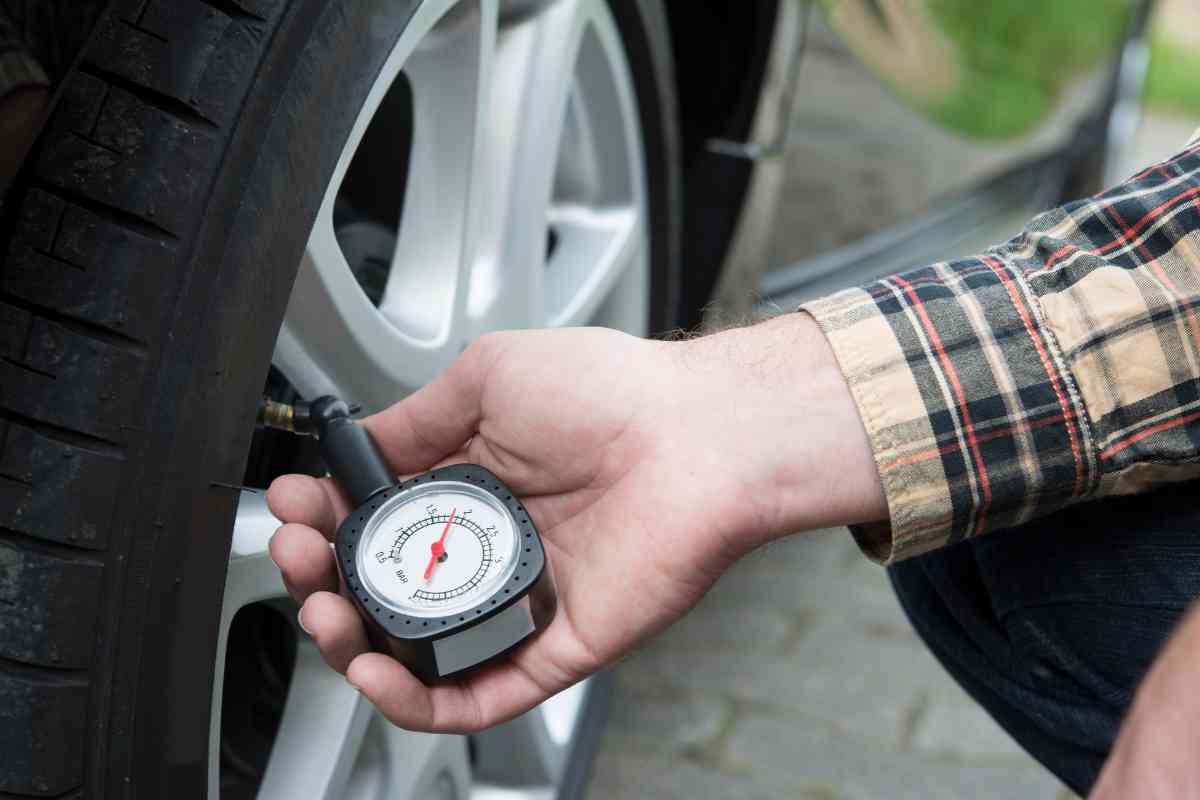
Repairing or Replacing the Flat Tire
If the flat tire can be repaired, it’s important to take it to a professional tire repair shop. They will be able to determine if the tire can be safely repaired and will use the correct tools and materials to do so.
If the tire cannot be repaired, it will need to be replaced. Make sure to choose a tire that matches the size and specifications of the other tires on your car. It’s also important to replace all four tires at once if they are worn or damaged to ensure even wear and proper handling.
For example, I once had a flat tire on a road trip and was able to temporarily repair it with an inflation kit. However, I took it to a tire repair shop as soon as possible to ensure it was properly repaired and safe to drive on.
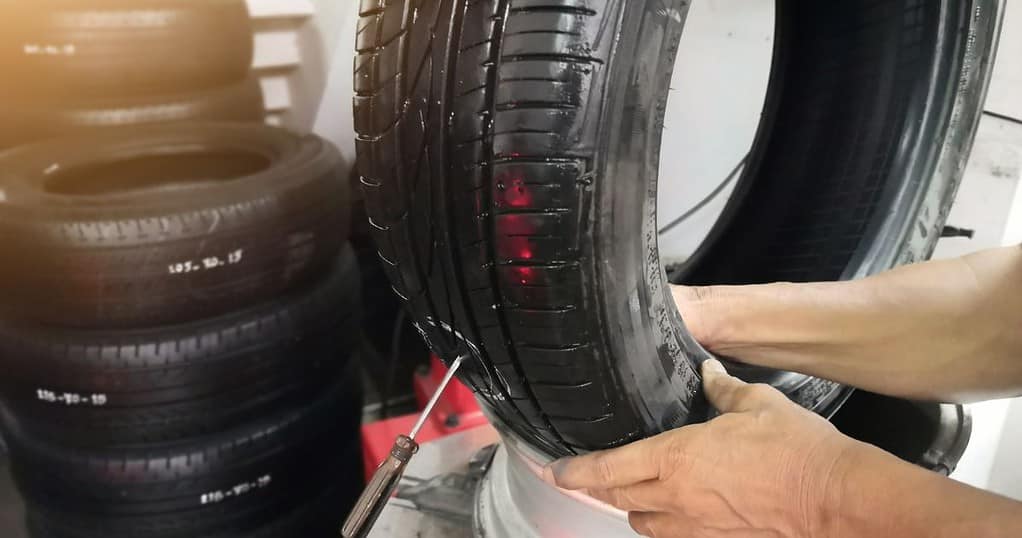
Options For Having Someone Else Change Your Tire (Roadside Assistance)
If you’re not comfortable changing a tire yourself or if you don’t have the necessary tools, there are a few options for having someone else change the tire for you. One of the most popular options is to call for roadside assistance.
Roadside assistance is a service provided by many automobile manufacturers, insurance companies, and other organizations. It can be a lifesaver if you’re stranded on the side of the road with a flat tire. Here are a few things to keep in mind when using roadside assistance:
- Cost: Some roadside assistance programs are included with your automobile insurance or are provided by your automobile manufacturer. Others may require a separate subscription or fee. Be sure to check the cost before calling for assistance.
- Response Time: Depending on where you are and the time of day, it may take some time for the roadside assistance provider to arrive. Be sure to let them know if you’re in a dangerous location or if you have any special needs.
- Services Provided: Roadside assistance providers typically offer a variety of services, including tire changes, jump-starts, and towing. Be sure to ask what services are included before calling for assistance.
- Real-World Example: I once had a flat tire on a busy highway during rush hour. I called my roadside assistance provider and they arrived within 30 minutes. The technician was able to change my tire quickly and safely, and I was back on the road in no time.
Overall, roadside assistance can be a great option if you’re not comfortable changing a tire yourself or if you don’t have the necessary tools. Just be sure to check the cost, response time, and services provided before calling for assistance.
I personally pay for AAA roadside assistance (not an affiliate link). It usually takes 45 minutes or so for someone to arrive, but I feel like that is a safer option for my family and me than risking changing a tire on a busy street by myself.
Plus, as a father with a teenage driver, if she has a flat, I like knowing AAA will be able to respond if I am out of town with work.
Where To Get A Flat Tire Repaired
When it comes to getting a flat tire repaired, there are a few options available. As someone who has had to deal with a flat tire on more than one occasion, I’ve learned the importance of having a reliable tire repair shop in mind.
One option is to take your vehicle to a dealership or a mechanic. While this may be a convenient option, it can also be expensive. Depending on the location and the extent of the damage, you could end up paying a hefty price for a simple repair.
Another option is to visit a tire shop. One popular tire shop that I’ve personally used is Discount Tire to fix flat tires. They have locations all over the country and offer a variety of services, including flat tire repair. Their prices are reasonable, and they have a knowledgeable staff that can help you determine the best course of action for your specific situation.
If you’re unsure where to go for a flat tire repair, you can also check with your car insurance provider. Many insurance companies offer roadside assistance services that include flat tire repair. This can be a convenient option if you’re in a bind and need help quickly.
In any case, it’s important to have a reliable tire repair shop in mind before you run into an issue. Doing your research ahead of time can save you time and money in the long run.
Key Takeaways
As I wrap up this guide on how to safely change a flat tire, I want to leave you with a few key takeaways to help you remember the most important points.
- Always check your car’s owner’s manual for specific instructions and safety precautions related to changing a tire on your particular vehicle.
- Make sure you have all the necessary tools and equipment before attempting to change a tire, including a spare tire, lug wrench, jack, and wheel chocks.
- Check your tire pressure regularly to help prevent flats from occurring in the first place. This is especially important for newer cars that may have tire pressure monitoring systems.
- Always change your tire on a level, stable surface, such as a flat stretch of pavement or concrete. Avoid changing a tire on soft ground or on a slope.
- When possible, try to change your tire in a well-lit area, especially if you’re on the side of a dark highway.
- Use your foot to stabilize the jack when lifting your car, and always double-check that the jack is securely in place before getting under the car.
- Store your spare tire in a safe, accessible location, such as your trunk or cargo area.
Remember, changing a flat tire can be a daunting task, especially if you’ve never done it before. But with the right tools, knowledge, and safety precautions, you can tackle this challenge with confidence and get back on the road in no time.
